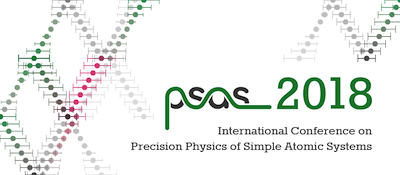Speaker
Description
Single particles in traps allow for clean investigations of basic interactions and also for the determination of fundamental constants. This has been demonstrated by investigations of Quantum Electrodynamics (QED) with respect to the g-factor of the free electron [1] and of hydrogen-like or lithium-like ions [2 - 4], which form the most precise determinations of the fine-structure constant and of the mass of the electron, respectively. Ion traps are also suitable for the study of the interaction of atomic ions with high-intensity laser radiation [5]. The trapping of hydrogen-like heavy ions up to uranium is possible at the heavy-ion accelerator at GSI with stripping and post-deceleration. At the HITRAP facility at GSI, the final stage for deceleration and trapping of bare and hydrogen-like heavy ions up to uranium has been commissioned. After stripping at energies of a few 100 MeV/u, the ions are decelerated down to 4 MeV/u in the Experimental Storage Ring (ESR) and further down to 6 keV/u by a combination of an IH and a RFQ structure operating as decelerators. Finally, the ions will be captured and cooled down to cryogenic temperatures in a Penning trap by means of electron cooling and resistive cooling. From this trap, they can be extracted and used for experiments. With this novel technique of deceleration, trapping and cooling of highly charged ions, atomic physics studies on slow highly charged ions up to uranium U92+ interacting with photons, atoms, molecules, clusters, and surfaces will be performed. In addition to collision studies, high-accuracy atomic physics experiments on trapped highly charged ions will be a significant part of the atomic physics program of the HITRAP facility. At the upcoming Facility FAIR, the HITRAP facility will form an integral component of both the SPARC as well as the FLAIR Collaborations.
This work was supported by BMBF, DAAD, DFG, EMMI, Helmholtz Association, and the Max-Planck Society.
[1] D. Hanneke et al., Phys. Rev. Lett. 100, 120801 (2008)
[2] S. Sturm et al., Phys. Rev. Lett. 107, 023002 (2011)
[3] S. Sturm et al., Nature 506, 13026 (2014)
[4] F. Köhler et al., Nature Comm. 7, 10246 (2016)
[5] S. Kumar et al., J. of Phys. 635, 092070 (2015)
| print service | yes, I'd appreciate a poster print service |
|---|

